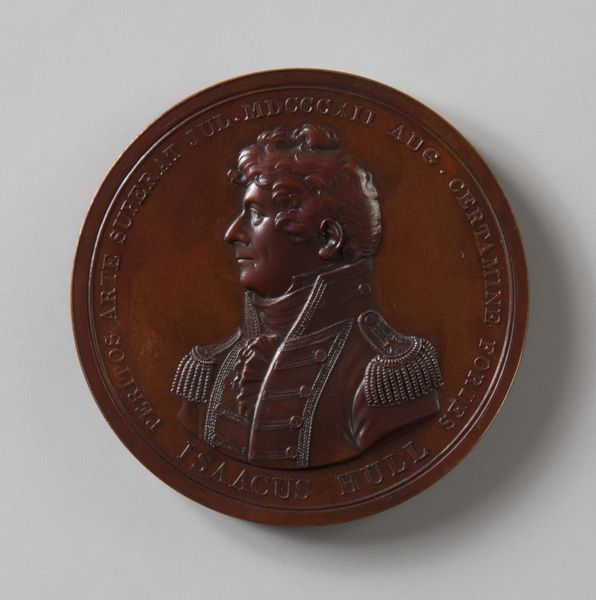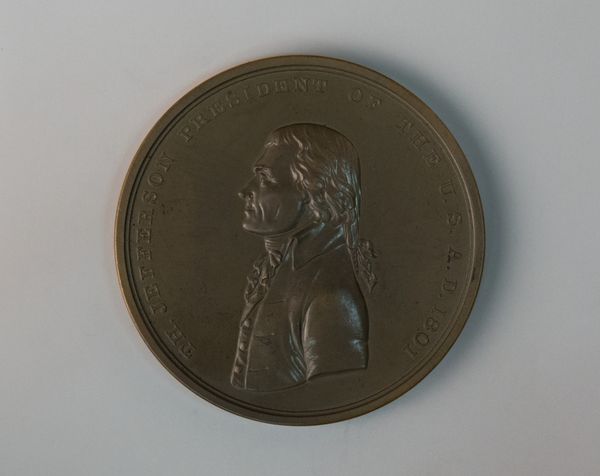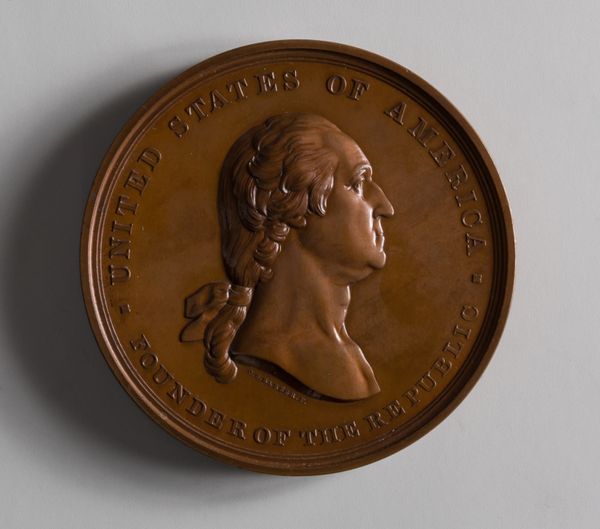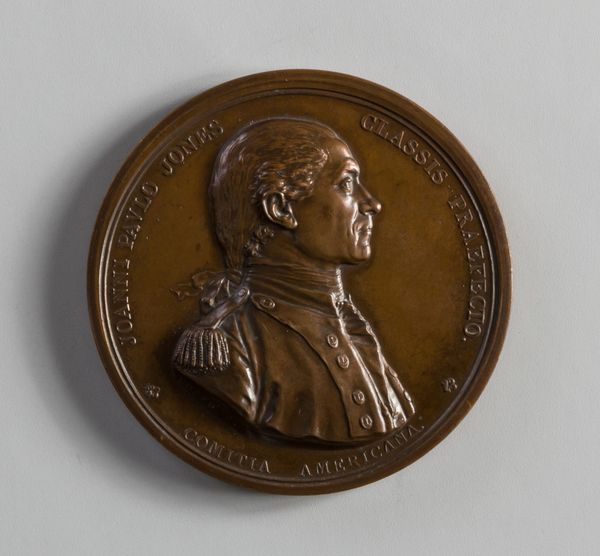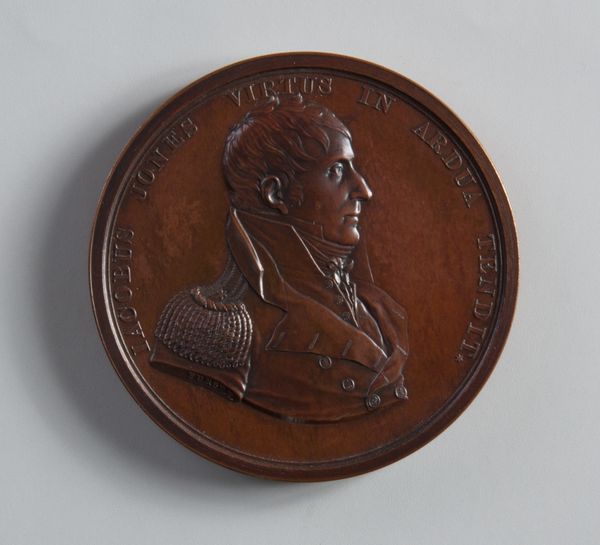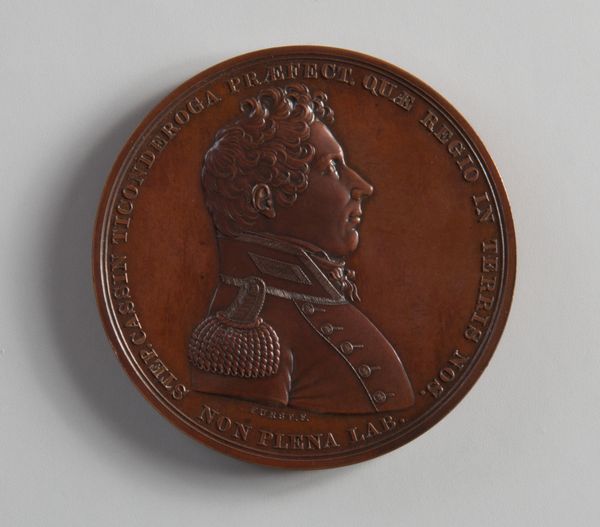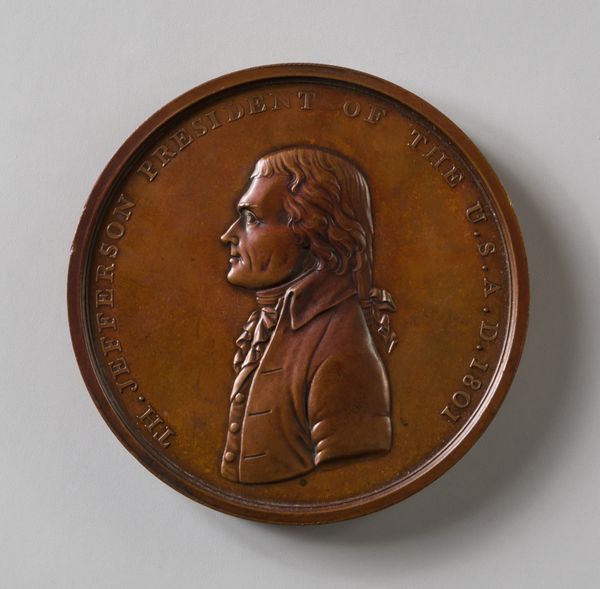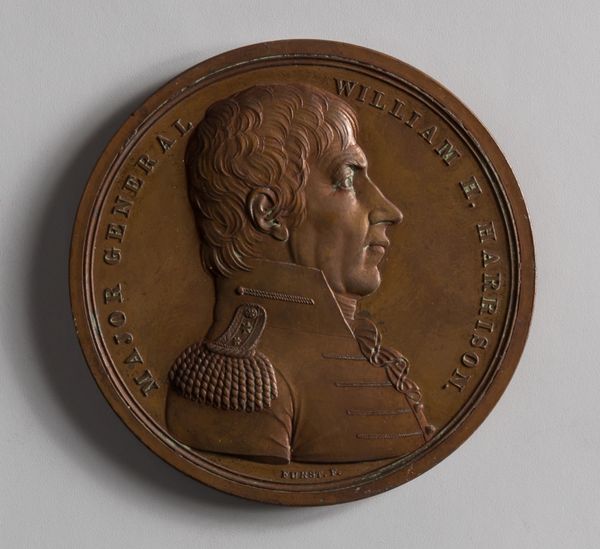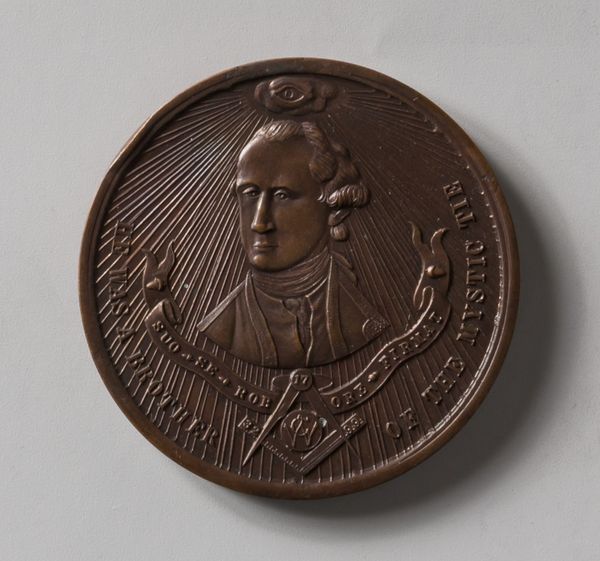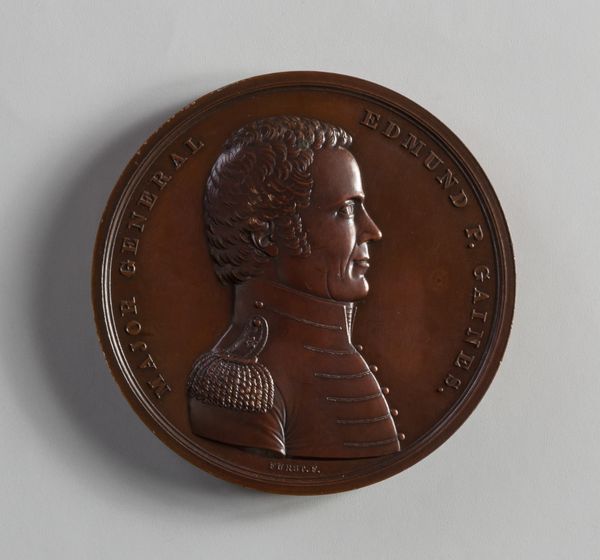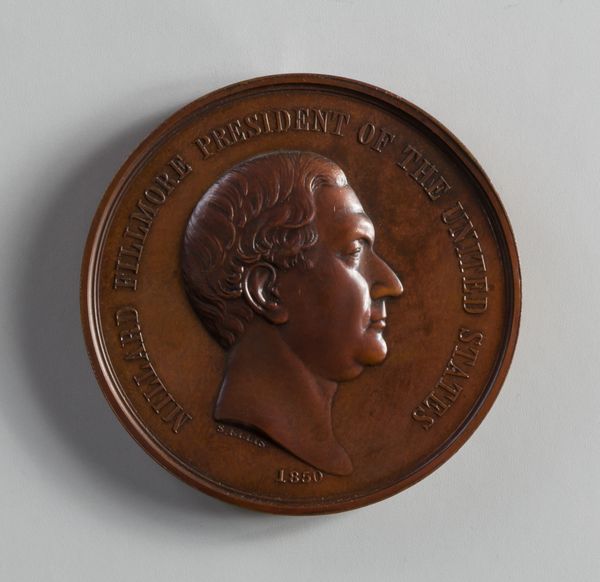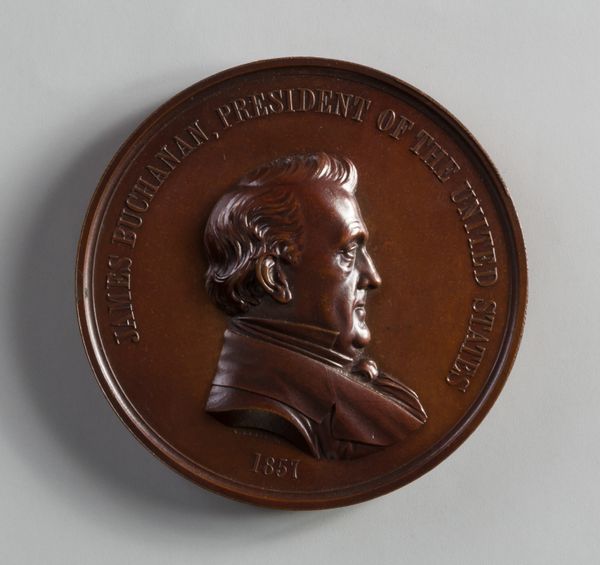
Commodore Edward Preble (1761–1807) and his Bombardment of Tripoli, August 3, 1804 1804
0:00
0:00
metal, relief, bronze
#
portrait
#
metal
#
relief
#
bronze
#
classicism
#
men
#
profile
Dimensions: Diameter: 2 1/2 in. (64 mm)
Copyright: Public Domain
Curator: This bronze relief from 1804, crafted by Johann Mathias Reich, immortalizes Commodore Edward Preble and his Bombardment of Tripoli. A powerful scene, wouldn’t you agree? Editor: Stark, actually. The sharp, clean lines of the profile against that metallic sheen feel almost clinical, despite the heroic subject. The use of bronze, of course, immediately gives it a kind of mass-produced quality as well, like some governmental factory churning them out. Curator: Precisely, the artist masterfully captures a Neoclassical aesthetic. Note how the strong profile emphasizes the virtue and decisiveness attributed to Preble – a symbolic simplification. Editor: Symbolism's interesting, but let’s not overlook the actual production here. Bronze isn't cheap! Someone invested significant resources to disseminate this image and message. I imagine workers toiling away at this in industrial quantity. How does the labor required in producing countless nearly-identical bronze reliefs interact with its aesthetic meaning? Curator: A worthwhile consideration. Though one might counter, that Reich transcends the limitations of the material. The strategic use of the limited depth, the precise arrangement of the inscription, create a powerful unified symbolic field. Note the composition leading us inevitably to the focus, that strong commanding face of Preble. Editor: True, it does pull your eye toward his gaze. Still, it feels like a form of controlled propaganda almost, celebrating imperial naval power with its material literally hammered out. How does the material of something so permanent communicate those powers, their ability to shape matter and reality itself? Curator: Well, it reflects how Preble was seen: an ideal, and that ideal required appropriate artistic expression rooted in the historical. It speaks to a classical heroic trope. Editor: All true. But also, the way it's mass-produced, it really pushes me to wonder: who paid to disseminate these images of Preble's triumph and what political purpose was the labor meant to serve at the time? I can see why Preble is the image chosen as an "ideal." Curator: It gives much food for thought on both artistic and material levels. Editor: Absolutely.
Comments
No comments
Be the first to comment and join the conversation on the ultimate creative platform.
